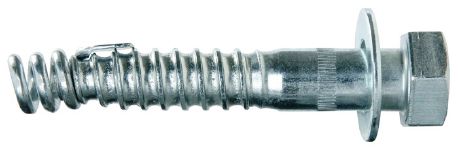Imagine you’re leading a sport route. It’s a “soft” 5.12a, but you’re a strong climber, so no big deal. You top out and encounter a rappel anchor set up like this:

Innocent looking anchor bolts.
Nothing to see here, right folks? Perfectly acceptable and bomber set up. NBD, right? Right. But looks can be deceiving. Imagine a guy involved in a rebolting project shows you that the bolts holding this anchor into the rock actually look like this:

Rusty rappel station bolt. Wait, what is that? A wood screw?
Holy shit! Is that rusty thing a wood screw? A lag bolt? Here’s the other one:

More Jive-Assery.
Damn! That one is sketchy as hell too! This is what you were rapping on, and not just here, but other bolts on this and several other routes. They looked perfectly fine when they were bolted in. But when they’re unscrewed they look like this:

Jive-Ass Lag Bolts(?) from Ozone, near Portland, Oregon.
These bolts were replaced at Ozone, a little climbing crag near Portland, Oregon, USA, by Topher Dabrowski and Micah Klesick as part of the Portland Re-Bolting Project. And bless those guys for volunteering their time to do so! This project is financially supported by local climbing club, The Mazamas and by the American Safe Climbing Association.

Topher and Micah rebolting at Ozone.
Now back to those Jive-Ass bolts. We have a policy here on Jive-AssAnchors.com not to name, shame, or ridicule anyone who may have, inadvertently or otherwise, engaged in acts of anchor jive-assery, That would be wrong. This being the case, I’m not going to name the routes where these anchors were found. You know the route, then you can figure out who put up the FA. And the person who put up the FA is almost certainly the person who bolted the route. Yes? So we won’t mention that. There has already been a bit of butt hurt in the Portland area climbing community on climbing forums concerning this delicate subject. In this regard, it has been pointed out by unnamed witnesses to the original bolting effort, that these screws are not just some garden variety lag bolts. Rather, they are actually Hilti Reusable Coil Anchors, considered acceptable for climbing purposes by some people, somewhere, at some period in history, damn it. And they’re not just “lagged” into a rocky hole, because there’s actually a little steel coil in that hole adding strength, like so:

Hilti HCA Resuable Coil Anchor: for dry indoor use only please.
Now that’s all fine and well, I suppose, except that the Hilti folks themselves stipulate that these bolts are to be used in dry, indoor conditions only, and not in the wet, outdoor, “temperate rain foresty” conditions of the American Pacific Northwest. They’re not intended for climbing routes, and they’re not even stainless steel! Moreover, as Topher has pointed out, “The first bolt only required a 1/2 turn of the head by hand and it came right out!” Yikes. And Micah has pointed out that they were lead to rebolt this area due to several bolt failures in which bolts came loose–one on an overhang, and one due to a lead fall! So yeah, don’t use these.
At any rate, those Jive-Ass bolts have been replaced with nice, solid, climbing-route-appropriate stainless steel, torqued into place like so:

Nice new stainless steel bolts, torqued to specification.
Long story short, donate money to rebolting efforts in your area. The ass that get’s saved may be yours!
Location: Ozone, near Portland, Oregon, USA













